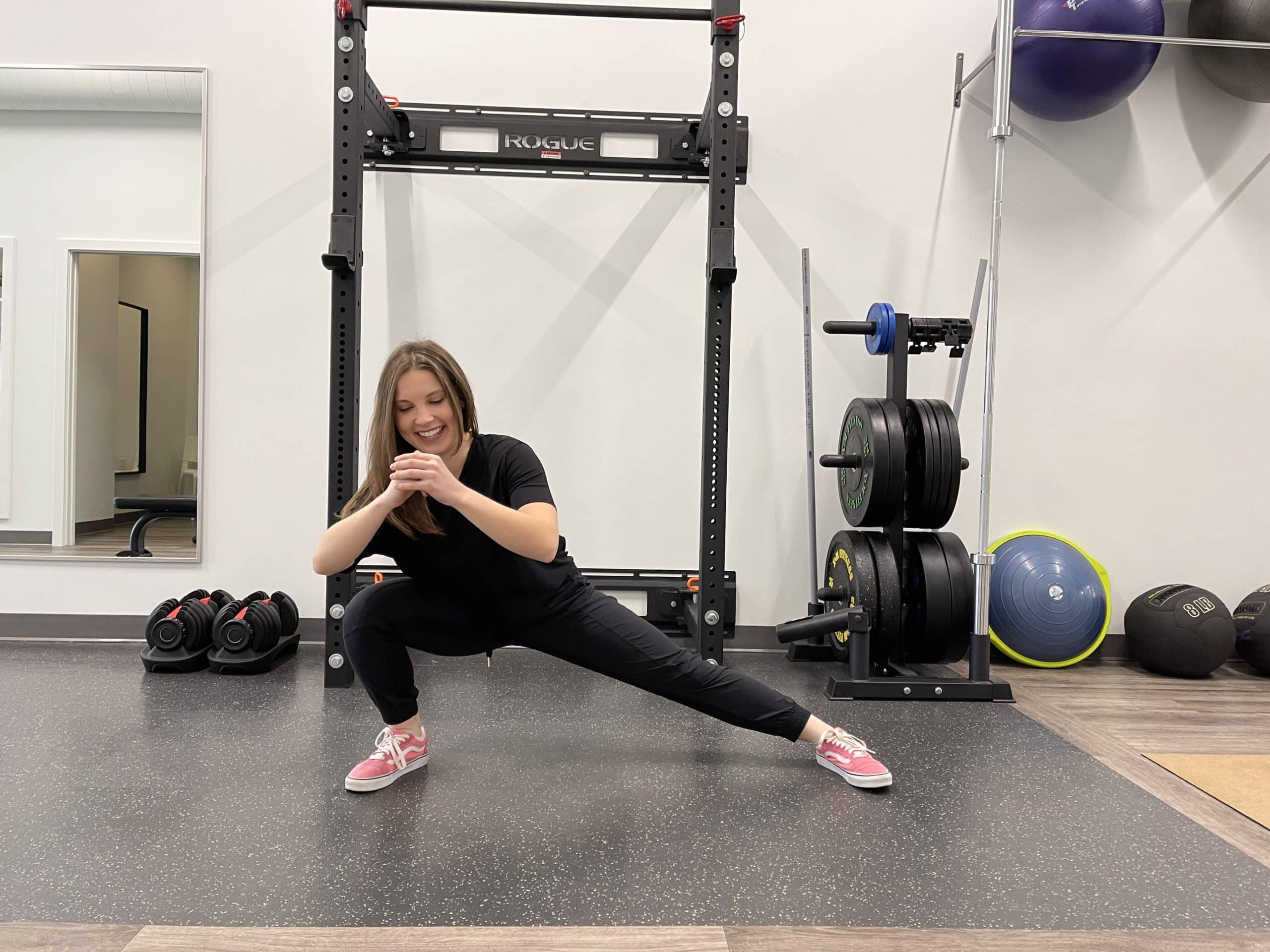Adductor muscle strain (AKA groin strain) is an injury to the muscle, or the muscle-tendon unit in the inner thigh. This injury is more common in males and is often seen in sports involving sprinting, kicking, twisting or sudden turning, such as hockey and soccer. People with a groin strain may experience pain or tenderness along the inner thigh which is exacerbated with stretching and hip adduction (moving the leg towards midline of body). Bruising or discolouration around the groin are also possible.
So, what in the inner thigh is injured?
There are six muscles that make up the adductors of the hip – adductor longus (most commonly injured), adductor magnus, adductor brevis, gracilis, obturator externus and pectineus. The main function of the adductors is to bring the legs towards midline however, these muscles also help to stabilize the hips. There are also other actions performed by some of these muscles based on their attachments, which is important for rehabilitation considerations. For example, adductor magnus extends the hip (brings it back) while pectineus helps to flex the hip (brings it forward).

Ok that’s all fun and informative. But how long until I can do the splits again?
The prognosis for recovery depends on the severity of the muscle strain, which can be categorized into 3 grades. Grade 1 is a mild strain with minimal loss of strength and range of motion, which often resolves in a couple of weeks. Grade 2 muscle strain is more severe, with significant loss of range of motion and strength, and could take up to a couple of months to recover. And finally, a fully torn tendon or muscle is categorized as grade 3 and could require surgery.
How can we help you with recovery?
In the initial stages of rehab, the goal is to minimize complications from immobilization. This means that movement is encouraged, and appropriate strengthening should be started early on. Typically, manual release of the muscle by your physio or chiro is also implemented into your management plan to promote optimal healing. As rehabilitation progresses, the exercises become more challenging to help you regain full range of motion and muscle strength, return to sport or to your activities of daily living with minimal discomfort. Ideally, the whole hip will be strengthened including hip extension and flexion to maximize function and recovery.
Here’s an example of what my go-to exercises include for rehabbing a client after an adductor strain:
101
- Sidelying leg raises
- Glute bridges with adductor squeeze
201
- Banded reverse lunges
- Cossack squats
301
- Lateral lunges with sliders
- Skaters
Is it useful to do these neat exercises if I don’t have a groin injury?
Absolutely! Research shows that performing adductor strengthening regularly may significantly lower the risk of groin strains, even in high level athletes. Choose a progression that’s suitable for you and book an appointment with us to find out how physio/chiro can help with injury prevention.
Book online with one of our chiro’s or physio’s today and follow us on instagram @function101locke for more educational content!
References: Harøy J, Clarsen B, Wiger EG, Øyen MG, Serner A, Thorborg K, Hölmich P, Andersen TE, Bahr R. The adductor strengthening programme prevents groin problems among male football players: a cluster-randomised controlled trial. British journal of sports medicine. 2019 Feb 1;53(3):150-7.




